order
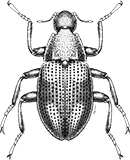
Coleoptera
“Adult Beetles”

Coleoptera
“Larval Beetles”

Diptera
“True Flies”

Ephemeroptera
“Mayflies”

Hemiptera
“True Bugs”

Lepidoptera
“Aquatic Caterpillars, Snout Moths”

Megaloptera
“Alderflies, Dobsonflies, and Fishflies”
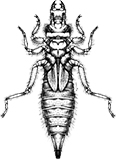
Odonata
“Dragonflies and Damselflies”

Plecoptera
“Stoneflies”

Trichoptera
“Caddisflies”
family
Hydropsychidae
Cheumatopsyche
“Seine-net Weaver Caddisflies”
Genus Overview
This common and widespread genus includes more than 40 species in North America. Like other members of the Hydropsychidae, they build fixed retreats with attached nets for filter feeding. Food includes algae, detritus, and some small invertebrate animals. They prefer streams with lots of riffles, especially warmer streams and rivers. Physically, they are similar in appearance to other hydropsychids, but can be distinguished because their frontoclypeus is usually notched; if it isn’t, the pair of intersegmental sclerites behind the prosternum are small, or both of these characters are usually present.
Characteristics
POLLUTION TOLERANCE
Southeast: 6.6
Upper Midwest: 5
Midwest: 2.9
Mid-Atlantic: 5
0 = least tolerant, 10 = most tolerant
FEEDING HABITS
Collector / Filterer
Engulfer / Predator
Engulfer / Predator
MOVEMENT
Clinger
DISTRIBUTION
Widespread (east of the Rocky Mtns.)
HABITAT
Lotic-erosional
Diagnostic Characters
order
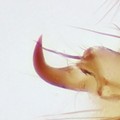
Prolegs With Single Hook
family
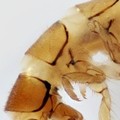
All Nota Sclerotized
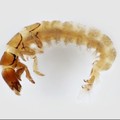
Retreat
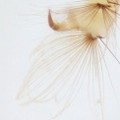
Setal Fan On Prolegs
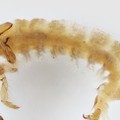
Ventral Branched Abdominal Gills
genus
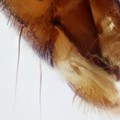
Notched Frontoclypeus
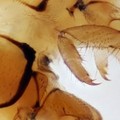
Small Intersegmental Sclerites
+ Expanded Character List
Order:
Larvae: Wings/wing pads absent. Eye spots present, but compound eyes absent. Antennae usually small, inconspicuous. Three pairs of segmented legs present on thorax. Pair of anal prolegs, each with single hook, located on last abdominal segment. Larvae can be free-living, in silken retreats attached to substrate, or in usually-portable tubes or cases made of sand, rocks, or plant material.
Family:
Pro-, meso-, and metanota entirely covered by sclerites. Ventral side of abdomen with rows of branched gills. Conspicuous tuft or fan of long hairs on each anal proleg. Anal claw with stout apical hook. Larvae building stationary retreats of silk, detritus, and rock fragments and add a silken net for filter feeding.
Genus:
Mandibles not flanged. Frontoclypeus usually notched, or thoracic sternum with pair of small intersegmental sclerites behind prosternum, or usually both of these characters present. Ventrally, genae divided mostly by only one fine longitudinal ecdysial line. Anterior ventral apotome without bump along the distal margin. Posterior ventral apotome small, inconspicuous, no longer than wide. Foretrochantins forked. Abdominal gills each with about 10 branches arising near distal end. Abdominal segment VIII with pair of sclerites ventrally. Sclerites on abdominal sternum IX each notched along posterior edge.
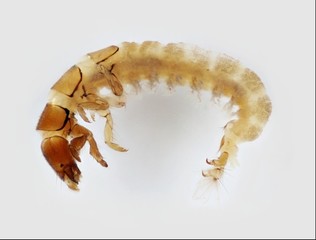
Lateral



